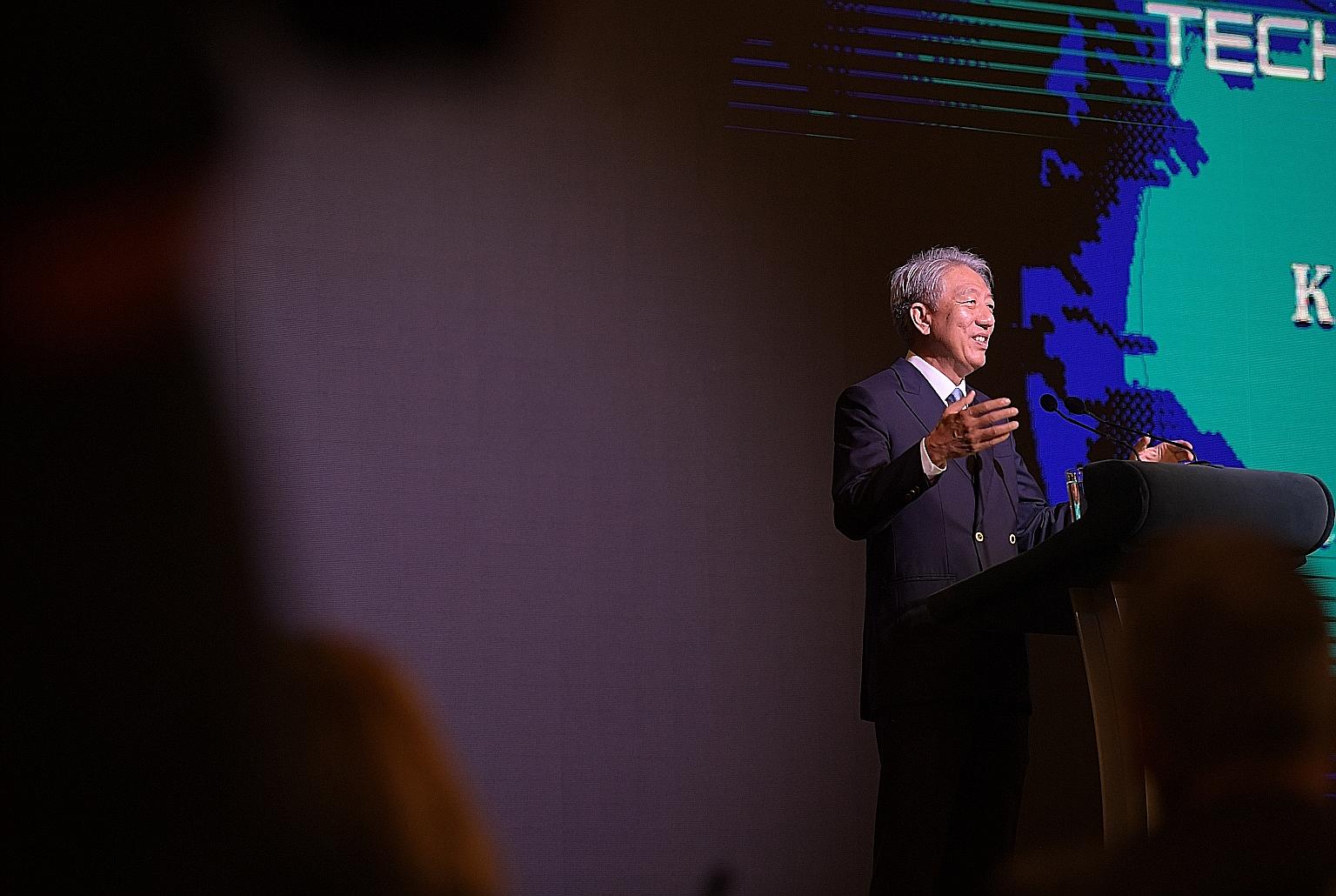S'pore signs agreements at defence tech summit
Pacts with UK, aviation firms to boost air force, logistics and counter-terror efforts
Sign up now: Get ST's newsletters delivered to your inbox

DEPUTY PRIME MINISTER TEO CHEE HEAN
Follow topic:
A stronger air force, better counter-terrorism measures and more efficient logistics management are in the works through several pacts Singapore inked with Britain and two aviation firms during the inaugural Singapore Defence Technology Summit here.
At the three-day event where Deputy Prime Minister Teo Chee Hean delivered a keynote address yesterday, several firms showcased high-tech wares, like the facial recognition technology by Chinese artificial intelligence company SenseTime that can spot car licence plates, recognise faces and even identify colours on clothes.
Other technologies on display included patent analytics and robotics, and a state-of-the-art fleet management system that the Republic of Singapore Navy will be introducing in phases by the year end.
The improved system allows commanders to have a better view of their fleet's abilities to stay out at sea for a longer period if necessary.
The Defence Science and Technology Agency (DSTA) and the Ministry of Defence (Mindef) said yesterday that they had inked three memorandums of understanding during the event, which ends today.
DSTA will work with Boeing to use data analytics and develop a system that identifies performance trends and insights for the Republic of Singapore Air Force's (RSAF) F-15 and AH-64 aircraft.
The agency will also work with Airbus to hatch technologies that better support RSAF aircraft.
RSAF contracts its A330 Multi-Role Tanker Transport and H225M tactical transport helicopters from the aviation firm.
Under the agreement, DSTA and Airbus will pool their engineering expertise to work on areas such as data analytics, augmented and virtual reality, and 3D printing.
On Wednesday, Mindef renewed a memorandum with its British counterpart to continue working to research, develop and test defence technologies. Both sides will also explore a deeper collaboration in logistics management, maritime autonomy and counter-terrorism.
Speaking to reporters, Professor Hugh Durrant-Whyte, who represents Britain's Defence Ministry, said both countries share similarities when it comes to the way they defend trade routes, and deter and de-escalate threats.
As a result, both sides have a lot of technologies and interests in common. An example may be cyber technologies, he added.
Some 400 delegates, comprising policymakers, industry experts and military personnel from 17 countries, attended plenary sessions on technology's boon and bane, among other topics.
In his address, DPM Teo urged the delegates to work together and develop security solutions for threats that can grow as quickly as technology.
The summit is a platform to develop partnerships that defend against new technological attacks that arise from an increasingly connected world, he added.
"The more interconnected we are, and the more we rely on key nodes and critical information infrastructure, the higher the concentration risks," said DPM Teo, who is also Coordinating Minister for National Security.
The larger system will also be more vulnerable to attacks that can scale up quickly, he noted.
He suggested establishing new codes of practice and norms for technologies that are getting ready for deployment but have no international standards, such as autonomous vehicles that are being tested in Jurong.
Eight of the summit speakers, who are global leaders in technology, met Prime Minister Lee Hsien Loong at the Istana yesterday.
They had a good exchange of views on emerging trends and opportunities arising from rapid technological changes, said the DSTA in a statement.

